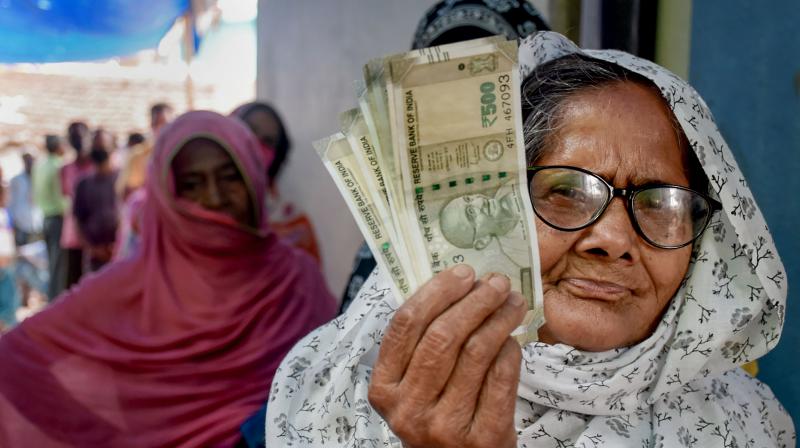
The NSAP at present includes five sub-schemes as its components
Objectives of NSAP
Benefits
A monthly pension of ₹ 200 up to 79 years and ₹ 500 thereafter.
Documents Required
- Duly filled and self-attested Application Form (proforma given the annexures of the scheme guidelines).
- Domicile Certificate
- Residential Proof (Voter card/ Electricity Bill/Aadhar Card)
- Age Proof (Birth Certificate issued by the School last attended or Municipal authority or SHO or through Medical Board)
- Aadhar Number
- Bank Passbook
- Ration Card
- Affidavit duly attested by Judicial Magistrate/Executive Magistrate that she/he is not in receipt of any pension/ financial assistance from any other source
Eligibility
- The applicant should be a citizen of India.
- The applicant should be living Below Poverty Line.
- The applicant should be at least 60 years of age.
Application Process
- One can download UMANG App or visit website https://web.umang.gov.in/web_new/home
- The citizen can login using mobile number and OTP.
- Once logged In, citizen can search for NSAP.
- Click on “Apply Online”
- Fill the basic details, choose the mode of payment of pension, upload photo and click on “Submit”.
FAQs
How Are The Beneficiaries Identified In Rural Areas?
As per the revised eligibility criteria, new beneficiaries will be identified from the BPL list prepared by the States/UTs as per guidelines issued by the Ministry of Rural Development (MORD) for the BPL Census 2002.
Who Implements NSAP?
The NSAP is implemented in the States/UTs in accordance with the general conditions applicable to all components of the NSAP as well as specific conditions applicable to each component. The NSAP Schemes are mainly implemented by the Social Welfare Departments in the States. But NSAP is implemented by Rural Development Department in the States of Andhra Pradesh, Assam, Goa, Meghalaya and West Bengal; by the Department of Women & Child Development in Orissa and Puducherry; by the Revenue Department in Karnataka and Tamil Nadu and by the Department of Labour Employment & Training in Jharkhand. The NSAP extends to both the rural as well as urban areas